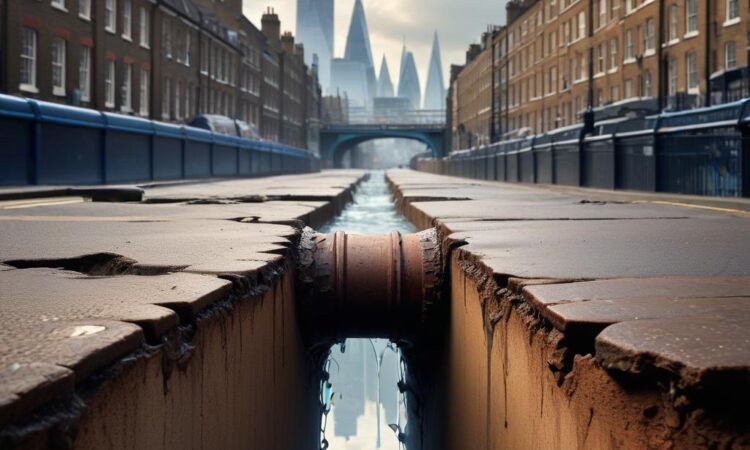Why is Thames Water in so much Trouble?
Right, so Thames Water, the UK’s biggest water company, has just snagged a massive rescue loan. Big whoop, right? Wrong. This isn’t some happy-go-lucky business story. It’s a massive flashing red light warning about something seriously wrong in the way we manage our water. So, how did this giant of the water world end up needing a bailout?
Let’s rewind a bit. Thames Water supplies water to a whopping 15 million people across London and the surrounding areas. That’s a LOT of people relying on them to, you know, *not* run out of water. And yet, here we are.
One of the biggest problems is, quite simply, debt. We’re talking billions of pounds worth. Years of underinvestment, questionable financial decisions, and a hefty dose of bad luck have piled up this mountain of debt. It’s like they were living beyond their means, only instead of maxed-out credit cards, they’re drowning in billions.
Think of it like this: Imagine your house needs a new roof. You keep putting it off, hoping for the best. Then, BAM! A massive storm comes along and rips the roof right off. That’s kind of what happened, but on a scale that affects millions. Thames Water has deferred vital maintenance and upgrades for years, resulting in aging infrastructure and increased leakages. It’s a ticking time bomb, and that bomb has pretty much exploded.
And it’s not just about the leaky pipes. Environmental regulations are a massive factor. Water companies are under increasing pressure to improve their environmental performance. Cleaning up pollution, reducing leakage, and investing in better wastewater treatment plants all cost money – money that Thames Water seemingly didn’t have, or chose not to invest.
Another issue is the regulatory environment itself. The rules governing water companies aren’t always crystal clear, and the penalties for breaking them haven’t always been strong enough to deter poor practice. This has allowed companies to cut corners and defer essential investments, leading to the crisis we see today.
So, the rescue loan is a bit of a sticking plaster. It might keep Thames Water afloat for now, preventing immediate chaos, but it doesn’t address the underlying problems. The real question is: what happens next? Will this be a wake-up call, forcing the company and the industry as a whole to make significant changes? Or is this just a temporary fix, delaying the inevitable?
There are calls for greater transparency and accountability within the water industry. People are demanding answers about where the money went, and how future investment will be managed to avoid another near-collapse. The government is under pressure to tighten regulations and ensure that companies are properly held to account for their environmental responsibilities.
The situation is complex, and there’s no easy fix. It’s a mess of financial mismanagement, regulatory failures, and years of deferred maintenance all rolled into one. But one thing is certain: the crisis at Thames Water highlights the urgent need for reform within the UK water industry. Without significant changes, we risk facing similar crises in the future, leaving millions without reliable access to clean water.
This isn’t just about Thames Water; it’s about the wider implications for water security and the environment in the UK. The ongoing drought conditions across parts of the country only exacerbate the urgency of addressing these issues. We need sustainable solutions, not just quick fixes. And that requires a complete overhaul of how we manage our precious water resources.
Ultimately, the Thames Water situation serves as a stark reminder of the consequences of short-sighted decision-making and the crucial need for long-term investment in our vital infrastructure. The rescue loan is a temporary solution, but the long-term health of the water industry depends on addressing the fundamental problems that led to this crisis.
This whole situation is a pretty grim reminder of how important it is to keep a close eye on how our vital services are run. It’s not just about turning on the tap and expecting water to magically appear; it’s about a complex system that needs careful management and responsible investment. Let’s hope this is a wake-up call for everyone involved.

